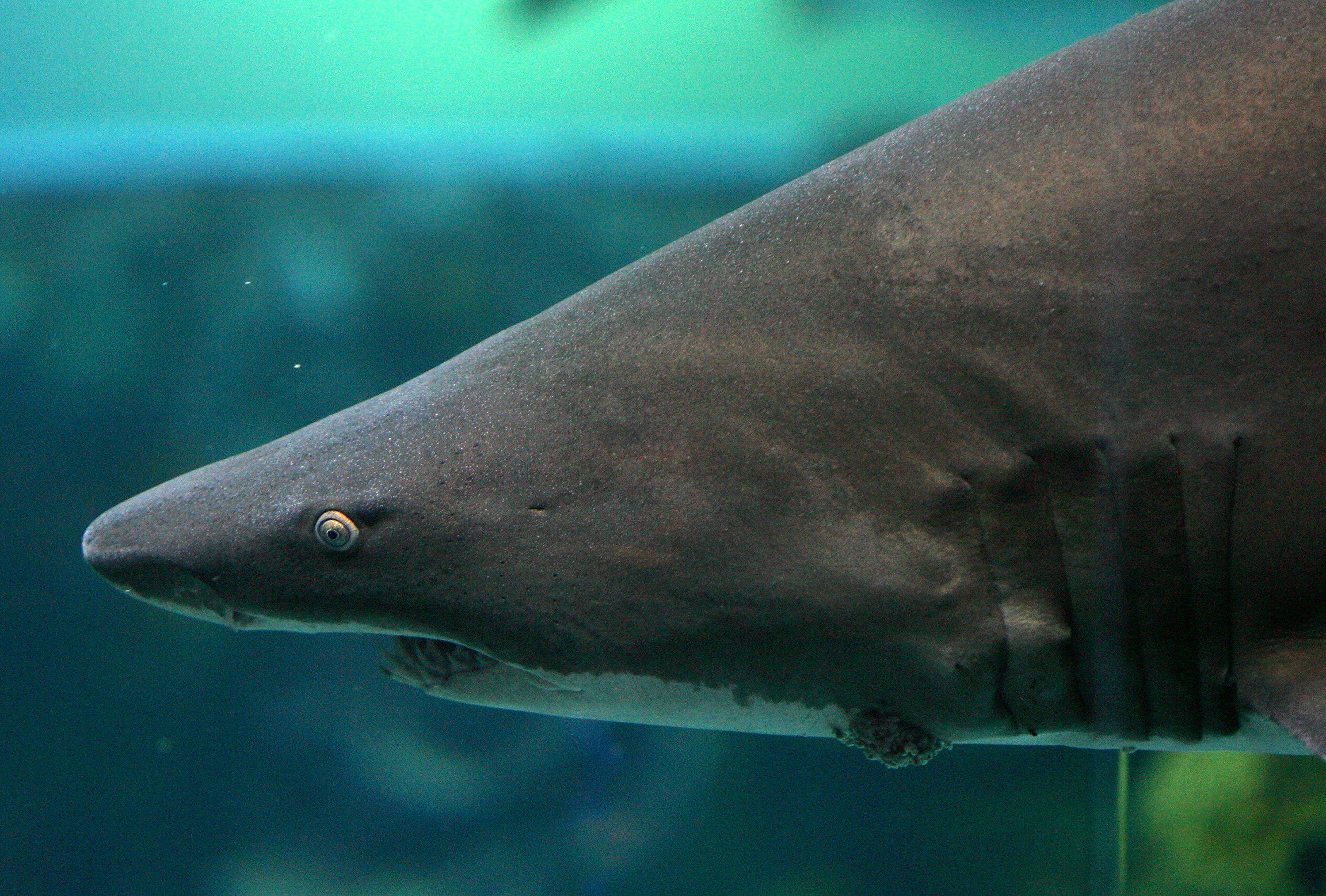This question originally appeared on Quora.
Answer by Mark Eichenlaub, Ph.D. student in physics:
For a shark, smell is carried through the water by currents. Since currents vary, so does the time it takes for smell to travel a quarter mile through the water.
Water is made of molecules all bouncing around all the time. In part, these molecules move randomly. The random motion causes nearby molecules to spread out over time. This sort of motion is called “diffusion”, and it’s what’s described by Yike Lu in his answer.
Roughly speaking, the distance ![]() that molecules diffuse depends on the square root of the time,
that molecules diffuse depends on the square root of the time, ![]() , with
, with ![]() the “diffusion constant.”
Doing a little algebra, this is the same as
the “diffusion constant.”
Doing a little algebra, this is the same as ![]() , but
, but ![]() is the average speed
is the average speed ![]() , so
, so
![]() As you increase the distance
As you increase the distance ![]() , the velocity falls. The longer the distance you want the molecules to go, the slower they will go on average. A typical diffusion constant for a medium-sized molecule in water is about
, the velocity falls. The longer the distance you want the molecules to go, the slower they will go on average. A typical diffusion constant for a medium-sized molecule in water is about ![]() . If we want the smell to travel a quarter mile, or a little less than
. If we want the smell to travel a quarter mile, or a little less than ![]() , we get a speed of
, we get a speed of
![]()
This speed is fantastically slow, and says that it would take ten million years for blood to diffuse out to a shark a quarter mile away. Diffusion is very important for small things, like bacteria, since the speed increases as you get smaller.
Why does it take so incredibly long for random motion to spread particles around through a large region? Consider two small patches of ocean right next to each other. At first, there’s a patch with lots of blood right next to a patch with very little blood. As particles move randomly, lots of blood particles move into the bloodless region without many going back the other way. But after a while, the blood is spread out pretty-evenly over an area of a few cubic meters. By this point, if you take a little patch of water, it has almost the same, low amount of blood as the patch next to it. Thus, random motion sends some blood particles left, some right, and they’re almost equal, so there’s very little motion of the blood overall. The further you want the blood to spread, the more evenly distributed it becomes and so the spread advances slower and slower.
So diffusion is not responsible for the spread of odors on human or shark-sized scales. When someone farts on the other side of the room, you don’t have to wait months or years before smelling it!
Waves also do not carry the smell to a significant extent. Here’s a picture of how a wave travels along the surface of water.
The point is that each individual point just moves in a small circle as the wave passes. Just like fans can do “the wave” at a sports game without anyone actually leaving their seat, waves travel through water without taking any of the actual water (or smell molecules) with them.
In practice, smell spreads through water or air via mixing, or currents. The water is always in motion: tides, temperature gradients, wind, fish swimming, Coriolis forces, etc all keep the water moving (though on different scales). This motion of the water carries smell molecules with it. The more motion, the faster the smell will travel, but there is no fixed speed, and in fact it will be different in different directions depending on which way the current is going. This is why hunters care about being upwind or downwind of prey, since wind will carry their smell.
More questions on physics:
How Quickly Does the Smell of Blood Travel Through Water?

Photo by Ethan Miller/Getty Images for CineVegas
Advertisement